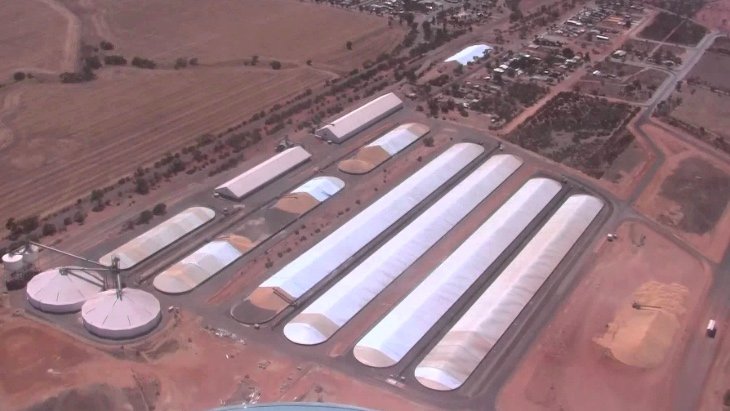Broadacre farmers delight, but where will we store all this grain?
- By: "Farm Tender" News
- Cropping & Grain News
- Jun 22, 2021
- 564 views
- Share

By Angus Groves - AWB
As Phillip Lowe, the Reserve Bank of Australia governor said last week, the performance of the Australian agriculture sector throughout the Covid pandemic has helped underpin the nation’s economic recovery.
That statement from the man in the top job holds particular weight as rain continues to fall across the East Coast in recent weeks. This rainfall and the Bureau’s recent suggestion of a negative Indian Ocean Dipole (IOD) developing in winter point to the continuation of favourable conditions for Aussie farmers, particularly those in the broadacre sector where conditions have been ideal of late.
However, one consideration that must be made this year, is where we are going to put all this grain?
If we cast our minds back to last year’s tremendous start to the cropping season, the storages across the country were all but empty after three long years of drought. This year we are off to a similarly great start, however there is a considerable volume of tonnes in the bulk handling system and some private estimates still have 25-30% of the East Coast crop in on-farm storages, being sheds, silos and grain bags.
Although the export pace has been frenetic this year, there will invariably be some carryover stocks in the bulk handling system after a bumper harvest. So, with high stocks likely at the farm level, and further reserves stored in the bulk handling system, does this indicate we’re heading towards a low-price environment come harvest time?
Recent marketing indications could suggest so with both wheat and canola trending lower over the past fortnight. With canola there has been some dramatic price falls with the improving weather across the US soybean, and Canadian canola crops. Add this to the recent suggestions, Joe Biden is considering easing biofuel blending mandates in the US, which would dramatically affect demand for the whole canola complex. All these factors must be viewed with a lens that the soybean/canola balance sheet will remain tight into the new season, which should continue to provide underlying support.
Wheat has taken its lead from corn in the last few weeks, with prices continually trading under the 700 cents/bushel mark for almost the entire month of June. For wheat to rally significantly in the lead into the Australian harvest there needs to be a supply problem somewhere in the world, and currently the Russian and US crops are above average.
The demand for wheat continues to remain strong as its feed substitute corn faces supply issues in the near-term months. But as corn harvest progresses in the US the inverse will allow more corn to become available, freeing up wheat that is currently replacing some of that feed demand. Reiterating the previous point, unless there is a significant supply problem in corn or wheat prior to our new crop Australian harvest period, the world will remain awash with feed grains.
Those looking to make forward sales should choose their timing wisely this year as the Australian crop looks in great condition.









Share Ag News Via